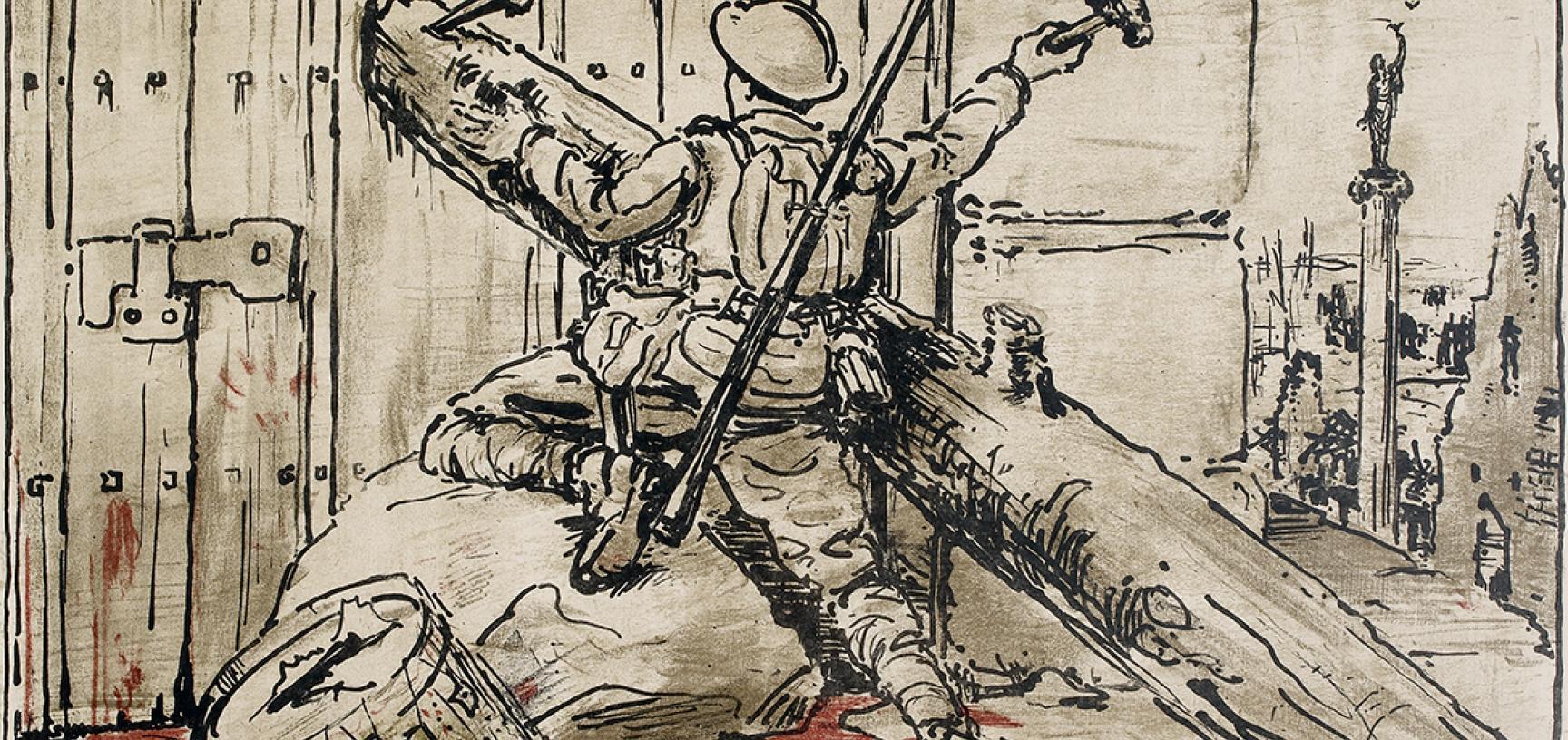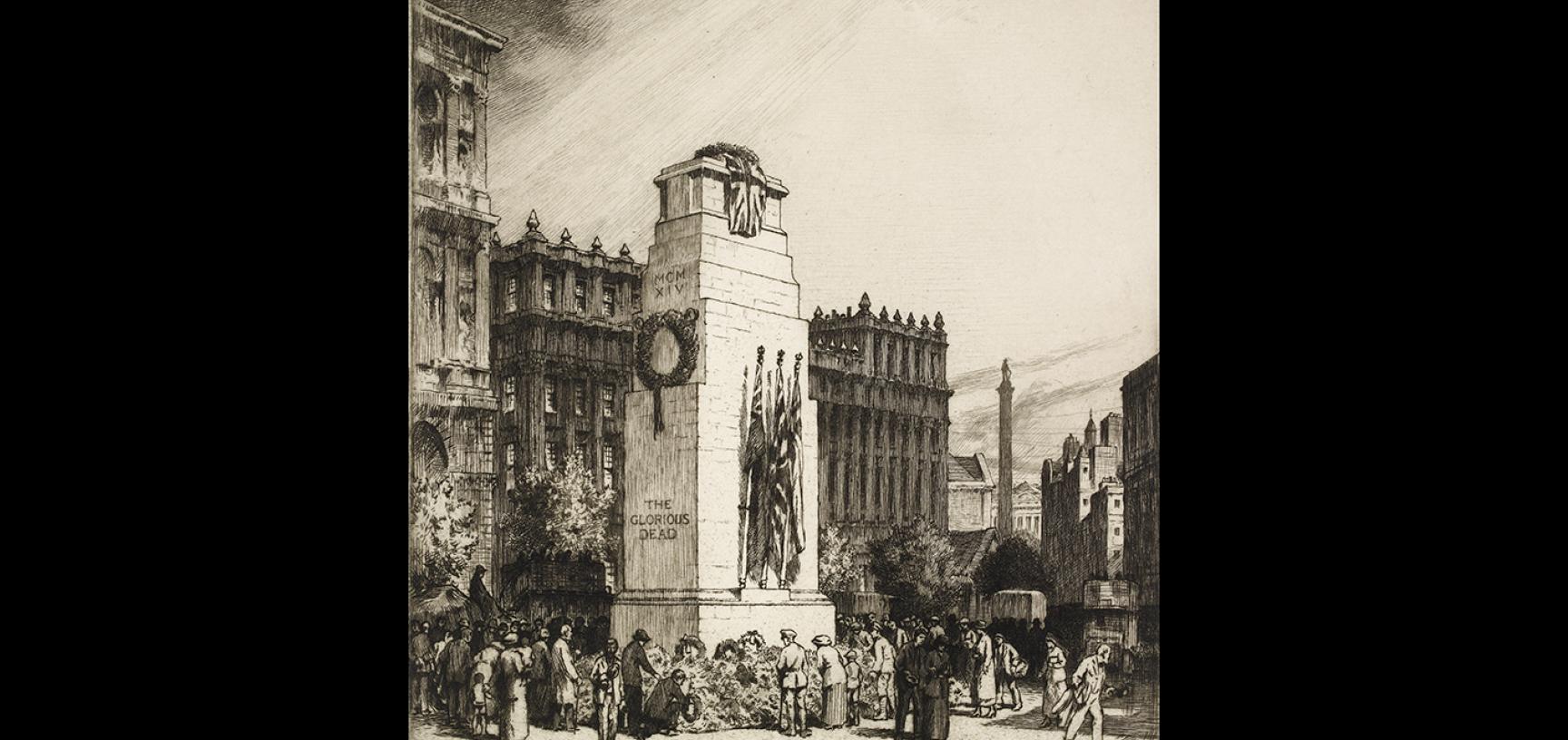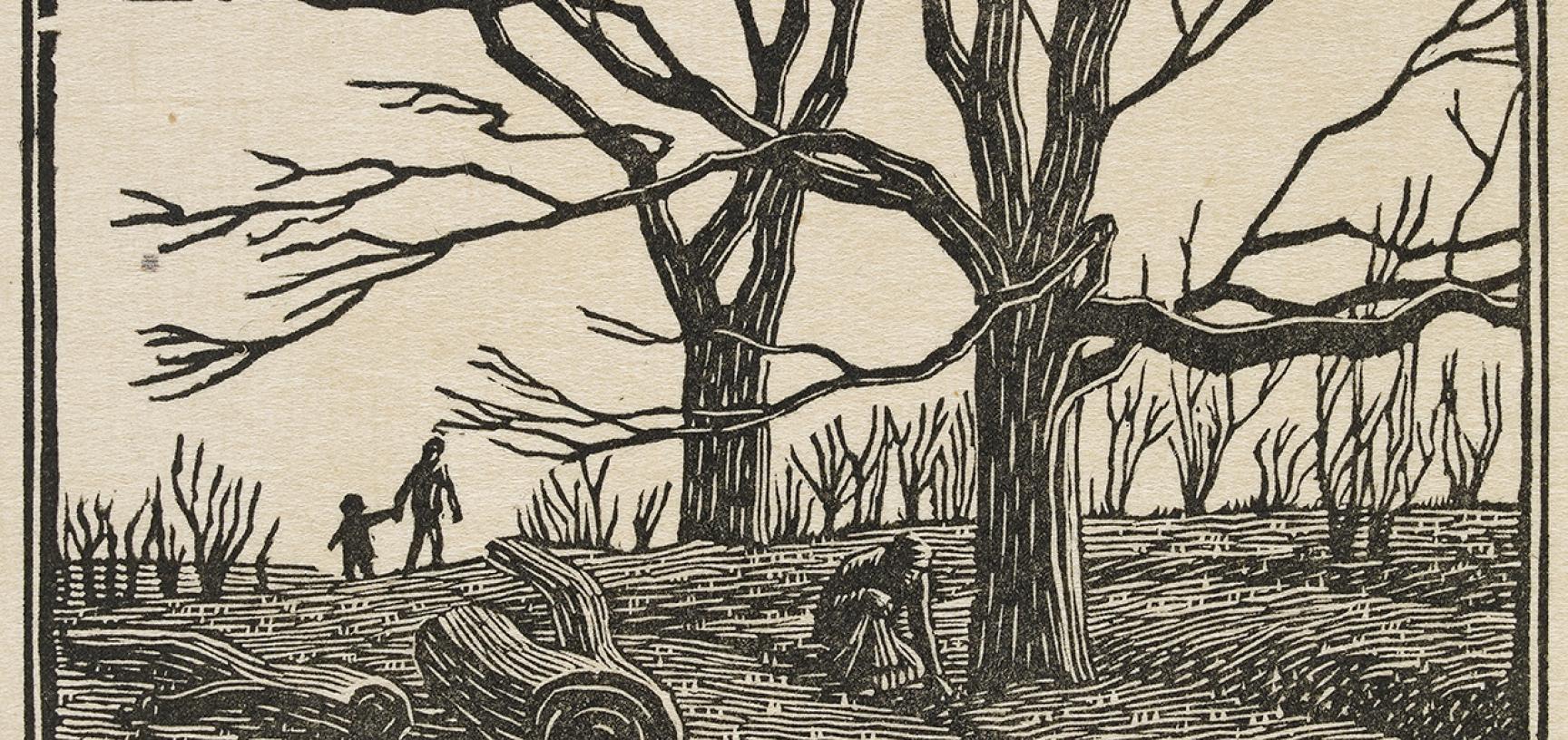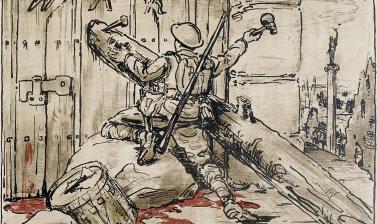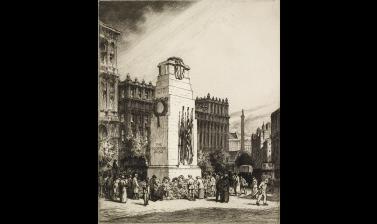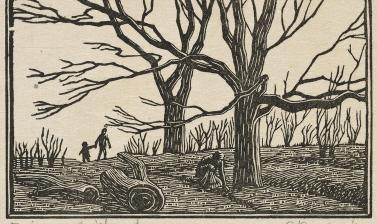IN MEMORIAM

IN MEMORIAM
1. William Nicholson, The End of War, 1917
This symbolic representation from the 'Ideals' series of Efforts and Ideals, expresses a yearning for an end to conflict, as a young soldier angrily hammers shut the doors of war with an oversized nail, treading in the pools of blood spilt by his fallen comrades. His gun and the diagonal of the tree trunk form a large cross at the centre of the composition, while his torn marching drum lies abandoned to the left. The triumphal column in the distance to the right, rising above the ruins, seems to be topped by a statue of Victory, in an echo of imperial Rome. Doves of peace appear to be descending onto the figure's outstretched hand.
2. Stanley Anderson, The Cenotaph, 1919
Stanley Anderson (1884–1966) was a highly skilled etcher and engraver, and the Ashmolean holds a large collection of his works. His prints bridge the war, from Mobilization Day, 1914 (WA1975.40) to this image of the Cenotaph, or 'empty tomb', designed by the architect Sir Edwin Lutyens (1869–1944) and dedicated to 'The Glorious Dead'. This print shows the temporary structure made of wood and plaster that was commissioned by Prime Minister David Lloyd George and erected for the Allied Victory Parade of 1919. The permanent structure, made of Portland stone, was installed in Whitehall in 1920 and is still the focus for the annual national service of Remembrance. The figures below the Cenotaph in Anderson's print have a quiet dignity, while the shaft of light illuminating the memorial, piercing the dark clouds overhead, carries a heavily symbolic charge.
3. Gwen Raverat, Primrose Wood, 1919
The grand-daughter of Charles Darwin, Gwen Raverat (1885–1957) studied at the Slade School in 1908 and, inspired by the works of Thomas Bewick, taught herself wood-engraving. Before the war she was part of the poet Rupert Brooke's set in Cambridge and also socialized with the Bloomsbury Group. In 1911 she married a French mathematician, Jacques Raverat, and in 1915 they moved to Le Havre to be near his family, returning to England by 1916. Gwen became a founder member of the Society of Wood Engravers, established in 1920, and regularly exhibited alongside Eric Gill, Lucien Pissarro and Robert Gibbings. Almost all of the prints she produced during the war years depict scenes of the countryside, as she escaped from the bleak news of events across the Channel into the unchanging beauties of nature.
In Memoriam (Easter 1915)
by Edward Thomas (1878–1917)
The flowers left thick at nightfall in the wood
This Eastertide call into mind the men,
Now far from home, who, with their sweethearts, should
Have gathered them and will do never again.


